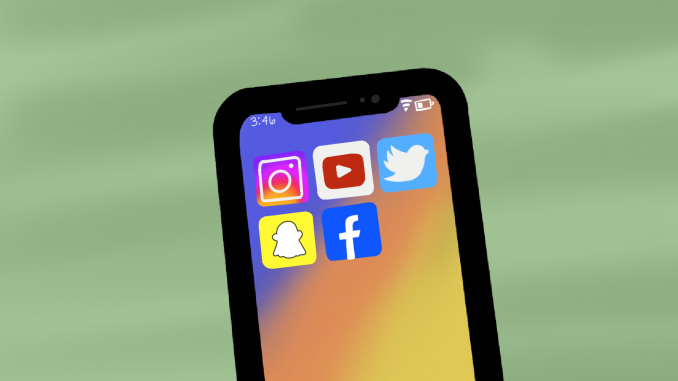
On Oct. 5, whistleblower Frances Haugen, a former data scientist at Facebook, released documents and records detailing the social media company’s known participation in political polarization and increase in mental health issues in teenage girls.
In 2017, Facebook established the Facebook Journalism Project, which is meant to fight the spread of misinformation and provide people with more reliable information using third-party fact-checkers, according to Facebook’s website. However, fact checking does not fully prevent negative online experiences.
Social media companies know their platforms can negatively impact young people, but aren’t taking enough steps to counteract this. Students, themselves, must promote a healthier online presence by fact-checking information before sharing and practicing kindness to create a better environment while online.
In August, I deleted Instagram and Snapchat because I felt overwhelmed by the fear of missing out on fun vacations and internship opportunities when I saw the people living what looked like amazing lives. I left Twitter because the political and social discourse frustrated me when I went on the app. I felt these social media apps created a negative environment, and I haven’t logged onto the platforms for three months.
Sixty-four percent of Americans recognize that social media has a mostly negative impact on current politics and social issues in the United States, according to the Pew Research Center.
Fifty-eight percent of teenagers have taken a break from at least one social media platform, according to Associated Press National Opinion Research Center.
This generation of students are digital natives, said Thomas Wright, a media literacy professor.
Digital natives are people who’ve grown up under the influence of the internet in their everyday lives, according to Investopedia, an organization whose goal is to provide simplified information about financial decisions to its viewers.
“My students, even compared to four or five years ago, are much more aware of the influence of social media, the impact of social media,” Wright said. “They’re more suspicious of social media.”
Young people should take matters into their own hands when navigating social media platforms. One way to do this is by fact-checking information they see on social media before sharing it with their followers.
Fact-checking is crucial during crises like the COVID-19 pandemic where misinformation about COVID-19 vaccines and the virus itself has spread rampantly. By diligently looking through what type of account is posting this information and assessing whether it’s a credible source, students are able to help stop spreading misinformation.
It’s important that students do not gloss over posts they see on social media, said Layla Longo, a freshman political science major.
“If people were more careful about believing some of what they see on social media, not just news but also the glossed over posts made to make people’s lives look perfect, it can maybe make social media a safer space for people, at least mentally,” Longo said.
Toxic communities can form online when people post false images that depict glorified lives or misrepresented outcomes, like bodies that fit beauty standards or only showing the happy parts of your life.
Eve Machata, a freshman secondary special education major, uses social media to message friends rather than scroll through posts. When Machata was more engaged in social media during high school, she became involved in a community of people with eating disorders.
“I didn’t know anybody in real life who was struggling with one, or at least not openly,” Machata said. “It just became a really toxic environment because there’s a lot of people encouraging each other to do harmful things to yourself.”
After going into recovery, Machata left the group and blocked accounts promoting unhealthy eating habits, she said.
Machata also placed child-locks, which monitor usage on certain apps, on most of her social media apps which limited how long she scrolled and helped her have a healthier relationship with social media, she said.
Among teens who reported suicidal thoughts, 6 percent of American users traced their desire to die by suicide back to Instagram, The Wall Street Journal reported.
Students must be intentional about how they interact and post on social media because they have the potential to spread misinformation and emotionally-harmful content.
When posting, sharing or reposting content, it is important to pause and think about what you are choosing to share with your peers, and if it is posted by reliable sources.
Students should work to preserve their mental health by laying out their reasons for using social media before logging on. This could be connecting with friends or getting updates about personal interests.
It takes a conscious, purposeful and mindful effort to remove yourself from using social media, Wright said.
Students must remember it is OK to take breaks from social media when it becomes more of a stress factor than entertainment. It is better to navigate every online space with a calm mind.


Be the first to comment